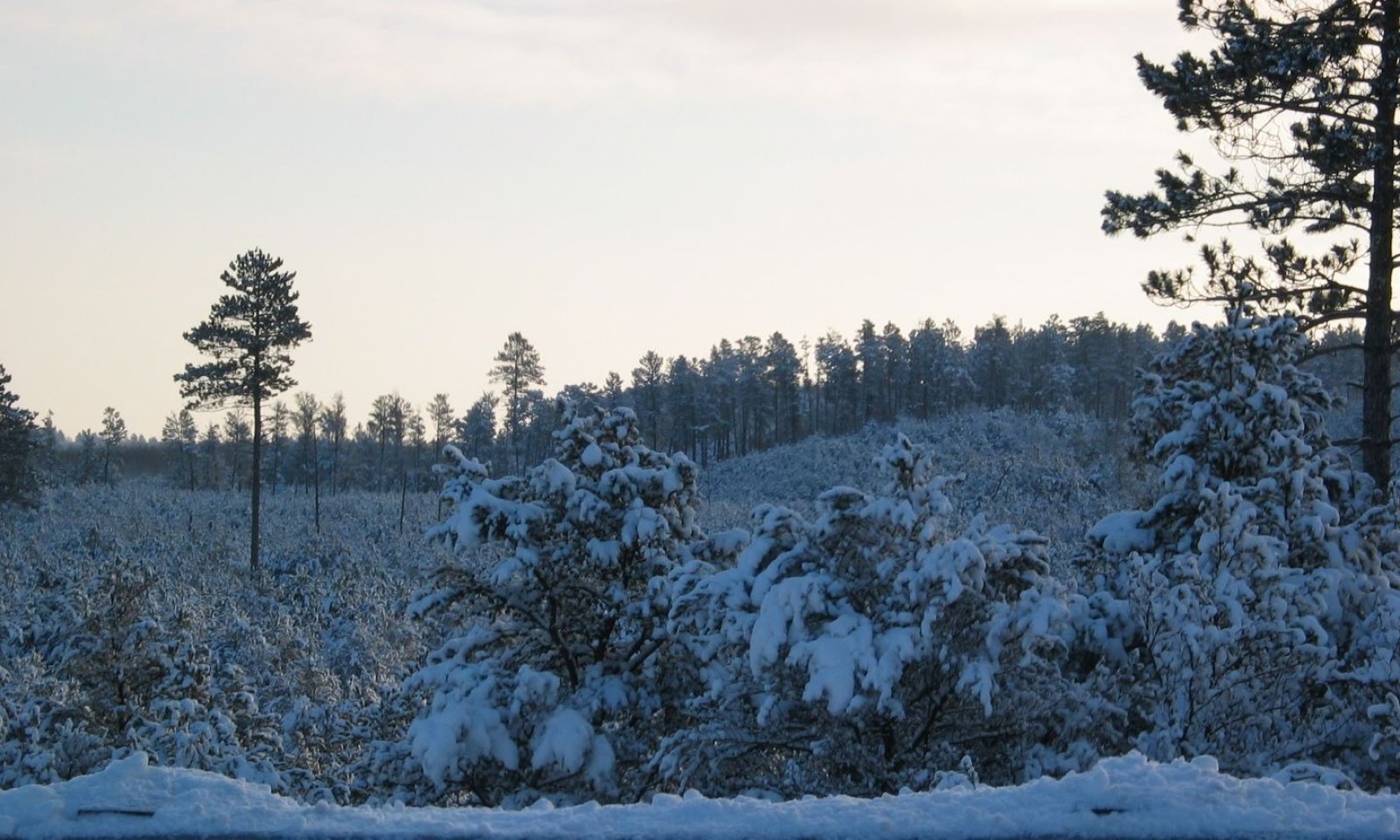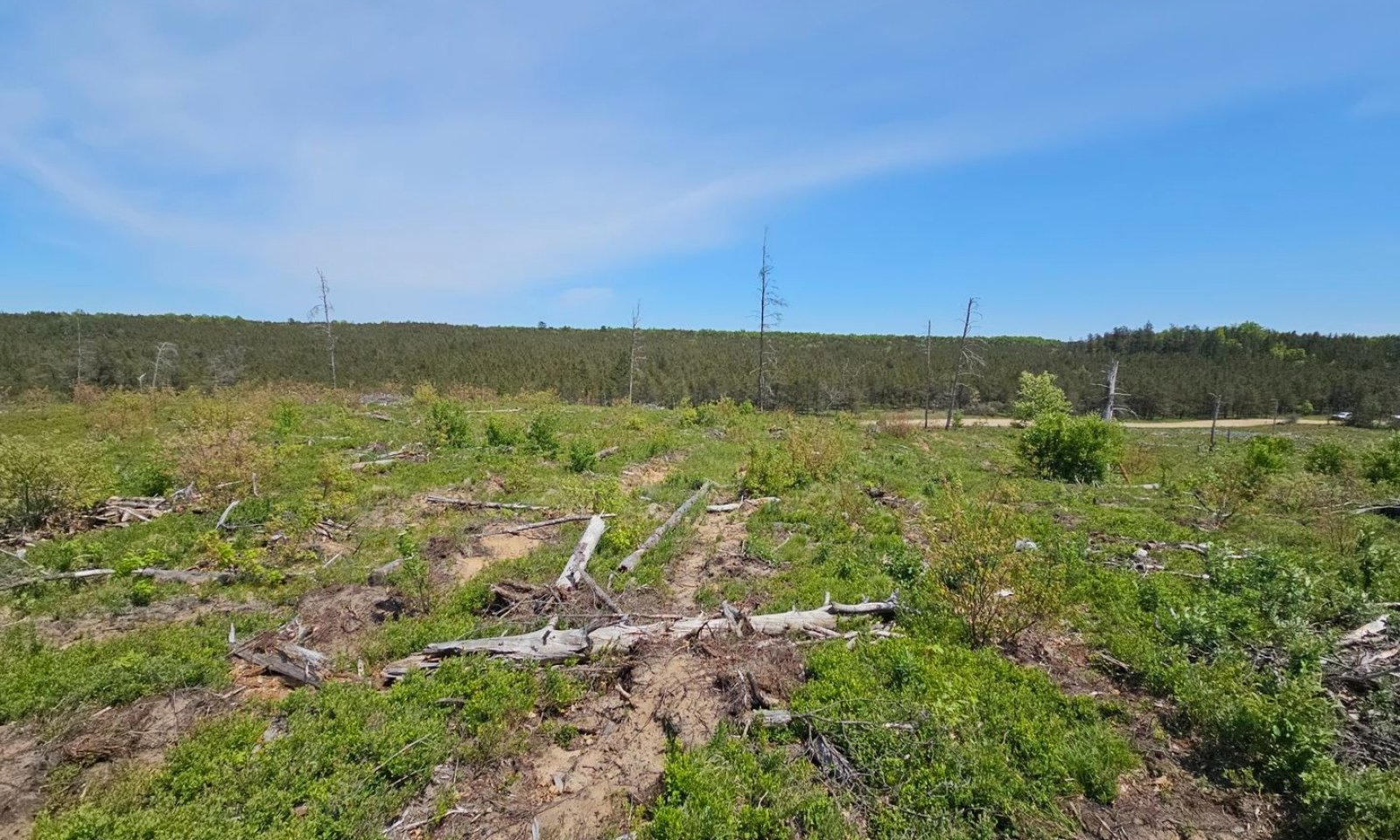
Dry Sandy Plains
Scenario model
Current ecosystem state
Select a state
Management practices/drivers
Select a transition or restoration pathway
-
Transition T1A
Clear vegetation; cultivate domesticated species
More details -
Transition T1B
Clear vegetation, invasive species introduced.
More details -
Transition T1C
Harvest and Planting
More details -
Restoration pathway R2
Removal of domesticated species; restore native species.
More details -
Transition T2A
Abandoned, succession.
More details -
Restoration pathway R3
Control invasive species; restore native species.
More details -
Restoration pathway T3A
Clear vegetation; cultivate domesticated species.
More details -
Restoration pathway R4A
Wildfire and migration/recolonization of missing native species.
More details -
No transition or restoration pathway between the selected states has been described
Target ecosystem state
Select a state
Description
The reference condition consists of a range of open grassy (sedgy) to open jack pine (Pinus banksiana) and red pine (Pinus resinosa) woodlands.
Characteristics and indicators
All taxa are naturally regenerating and adapted to reoccuring fire. Presence of invasive species or trees planted in rows are all signs of alternative states.
Resilience management
Larger patches are still subject to occasional wildfire despite attempts at fire suppression. Low fertility of the site results in slow plant growth and thereby slow rates of mesophication during longer fire intervals and slow spread of invasive species except where soil is disturbed.
Submodel
Description
Hayfields and Christmas tree farms have been observed on similar sites in adjacent LRUs and are likely to occur to some degree here on private land. Cultivation of annual crops is limited due to short growing season and low soil nutrients.
Characteristics and indicators
Composition is completely regulated by land manager. Natural reproduction is inhibited.
Resilience management
May require constant fertilization to maintain productivity, but excess nutrient may also change soil chemistry that affects the species composition if ever abandoned.
Submodel
Description
The seminatural state consists of novel or reference analogs which happen to have an excess of invasive species beyond a threshold that native species can reproduce.
Characteristics and indicators
Invasive species in excess of an easily controlled abundance indicates this state.
Resilience management
Some invasive plants release allelopathic chemicals which may inhibit the growth of native species. A long seed bank for some species may make eradication challenging.
Submodel
Description
The intensively managed state consists of clear cut logging activities and plantations of native tree species. It retains many of the functions of the reference state, but some community phases may be missing species or horizonal and vertical structure may differ in ways that have consequences to wildlife and at minimum "looks" artificial. Sometimes may be lacking in snags, due to harvest removing senescing older trees, but management interventions may mitigate this through girdling or other means.
Characteristics and indicators
Soil disturbance and trees planted in rows is an indicator of this state.
Resilience management
Periodic harvest removing nutrients on the site may reduce the productivity over time, but the species in this ecosystem are already tolerant to low nutrients. It is conceivable that repeated soil disturbance over a large area, without fire, may systematically change species composition over time (i.e. changes in meta-populations of species that have reproductive strategies favored by soil disturbance rather than fire).
Submodel
Mechanism
Clear vegetation; cultivate domesticated species
Mechanism
Clear vegetation, invasive species introduced.
Mechanism
Harvest and planting of a native stand, or replanting of a wildfire consumed stand.
Mechanism
Remove domesticated species; restore native species.
Relevant conservation practices
| Practice | External resources |
|---|---|
|
Brush Management |
|
|
Tree/Shrub Site Preparation |
|
|
Tree/Shrub Establishment |
|
|
Restoration and Management of Rare and Declining Habitats |
|
|
Upland Wildlife Habitat Management |
|
|
Herbaceous Weed Control |
Mechanism
Abandoned, succession.
Mechanism
Control invasive species; restore native species.
Relevant conservation practices
| Practice | External resources |
|---|---|
|
Brush Management |
|
|
Tree/Shrub Site Preparation |
|
|
Tree/Shrub Establishment |
|
|
Restoration and Management of Rare and Declining Habitats |
|
|
Upland Wildlife Habitat Management |
|
|
Herbaceous Weed Control |
Mechanism
Clear vegetation; cultivate domesticated species.
Model keys
Briefcase
Add ecological sites and Major Land Resource Areas to your briefcase by clicking on the briefcase (![]() ) icon wherever it occurs. Drag and drop items to reorder. Cookies are used to store briefcase items between browsing sessions. Because of this, the number of items that can be added to your briefcase is limited, and briefcase items added on one device and browser cannot be accessed from another device or browser. Users who do not wish to place cookies on their devices should not use the briefcase tool. Briefcase cookies serve no other purpose than described here and are deleted whenever browsing history is cleared.
) icon wherever it occurs. Drag and drop items to reorder. Cookies are used to store briefcase items between browsing sessions. Because of this, the number of items that can be added to your briefcase is limited, and briefcase items added on one device and browser cannot be accessed from another device or browser. Users who do not wish to place cookies on their devices should not use the briefcase tool. Briefcase cookies serve no other purpose than described here and are deleted whenever browsing history is cleared.
Ecological sites
Major Land Resource Areas
The Ecosystem Dynamics Interpretive Tool is an information system framework developed by the USDA-ARS Jornada Experimental Range, USDA Natural Resources Conservation Service, and New Mexico State University.








